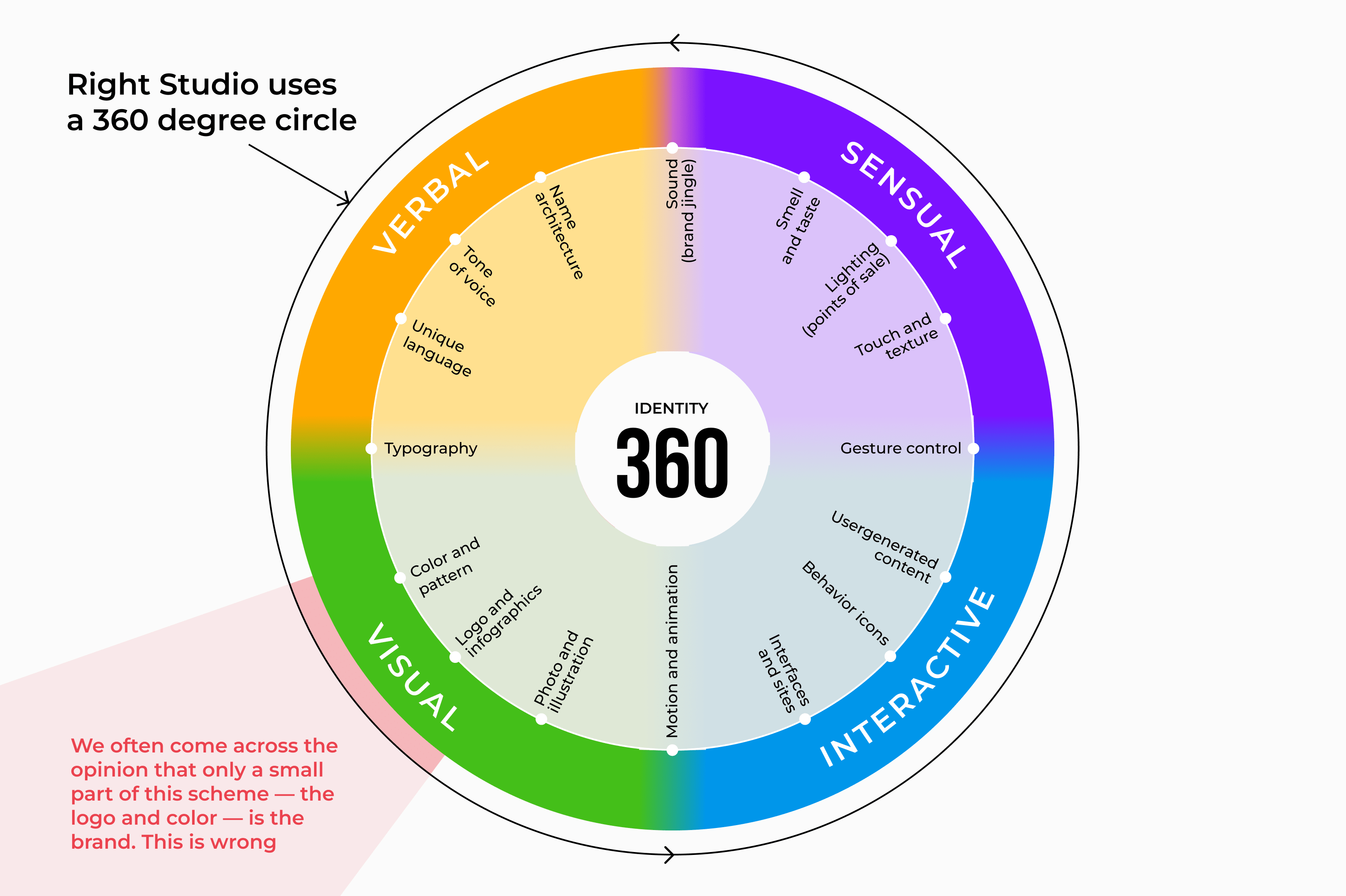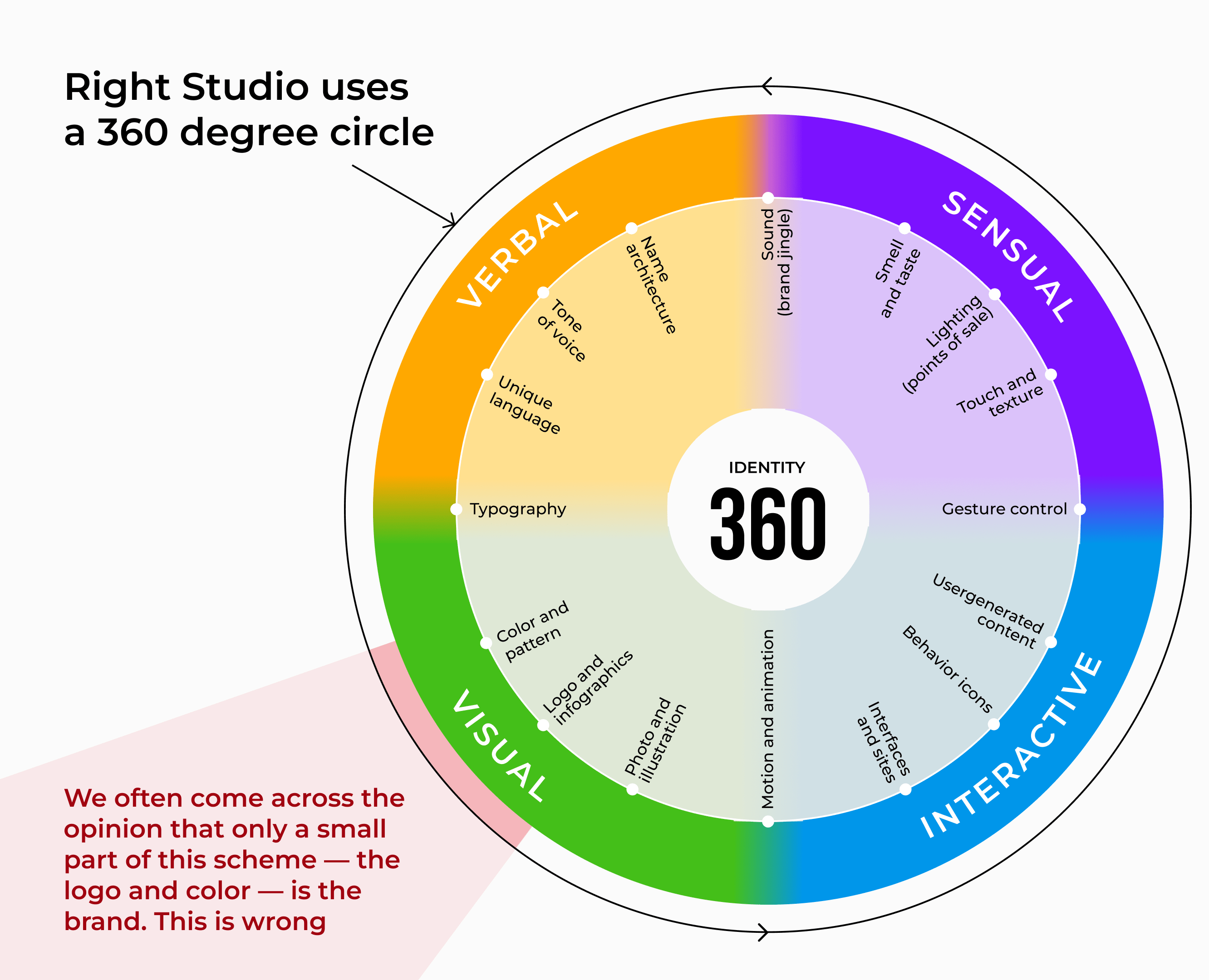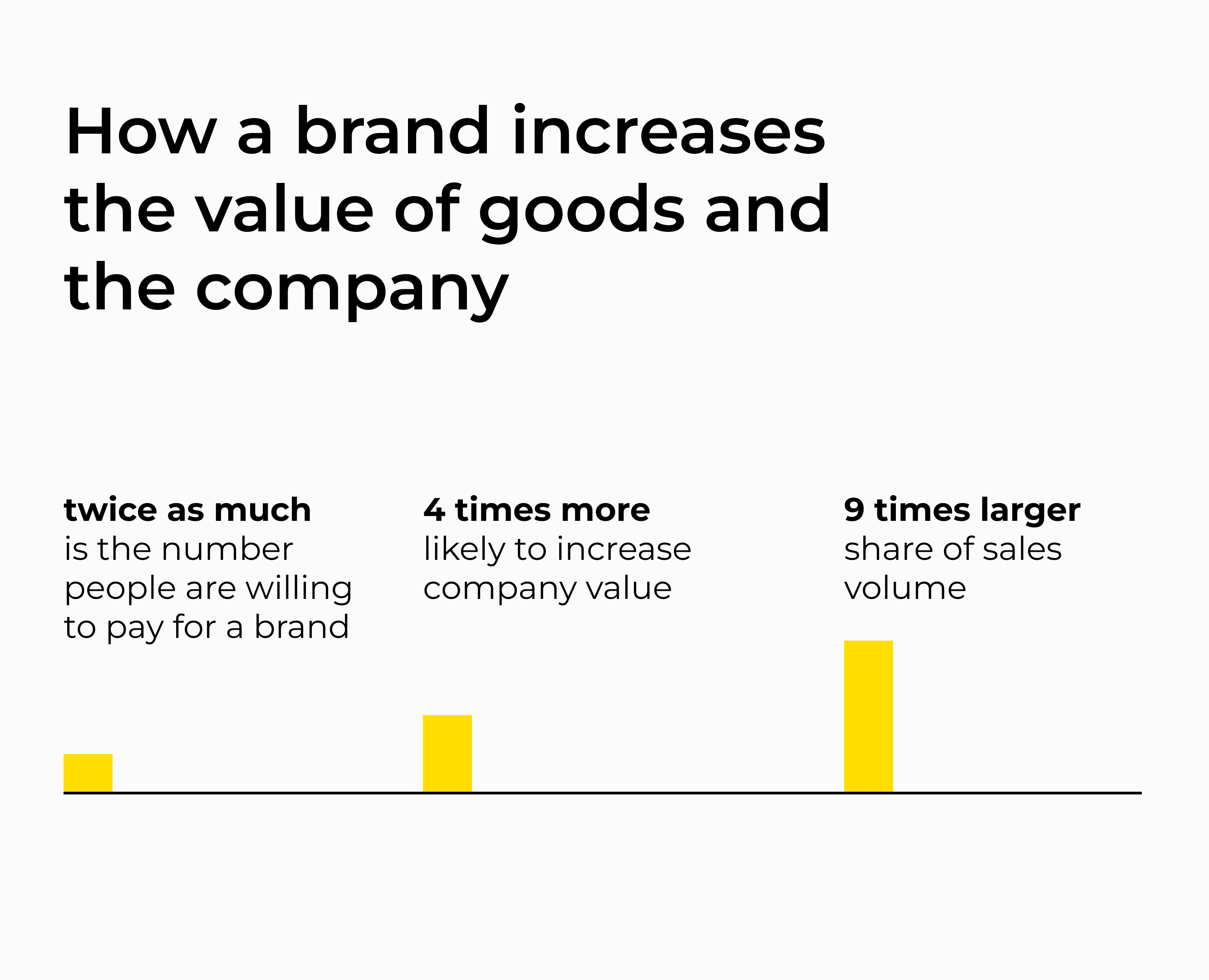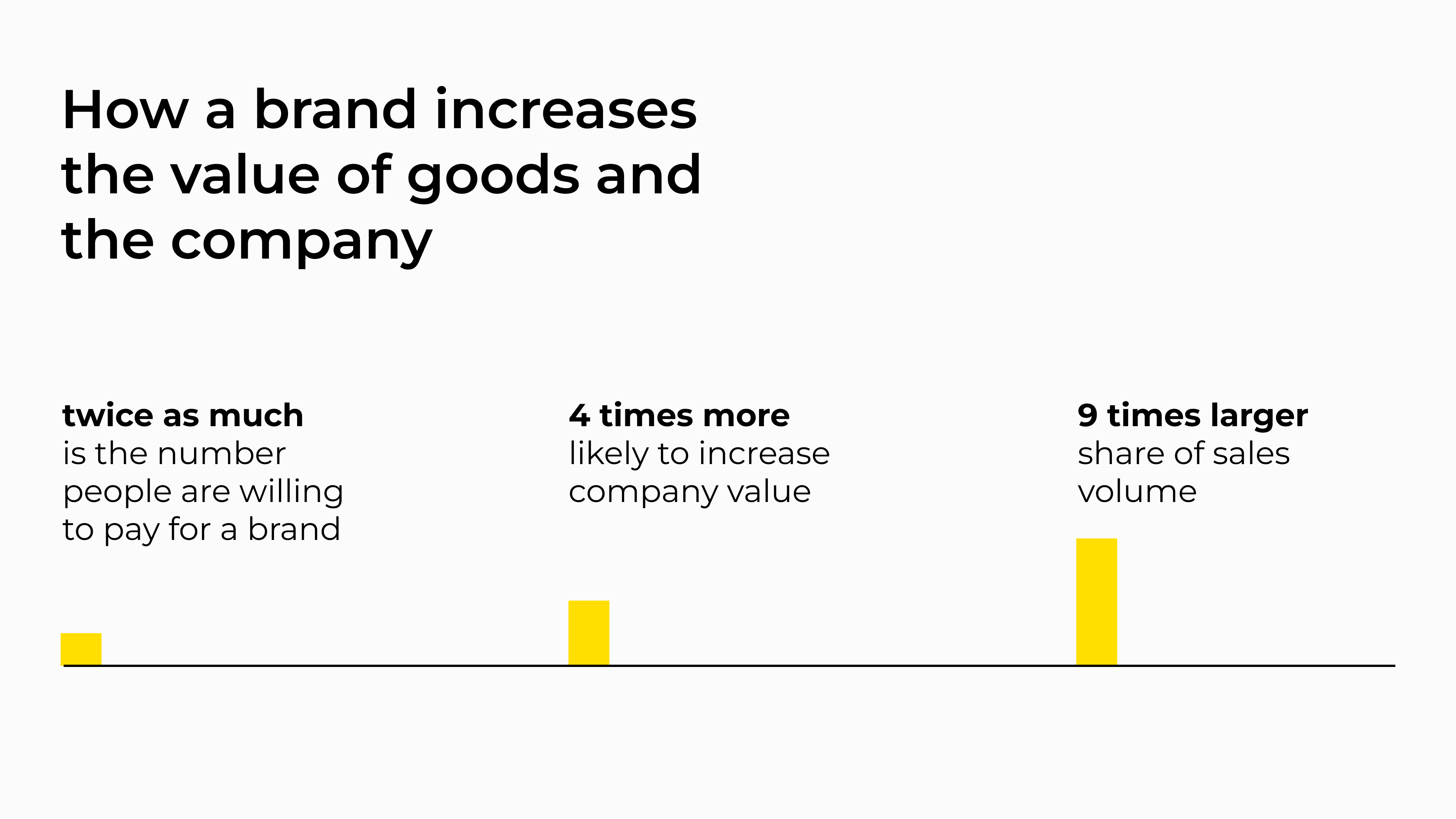Stereotypes about the brand and why it should be created even if you are small and modest
Let’s dispel common stereotypes surrounding brands and set aside examples of companies with hefty six-figure advertising budgets for a moment.
Legends around branding
In my line of work, I frequently encounter recurring misconceptions about branding. While these are often myths, it’s entirely reasonable and fair for businesses to harbor fears and doubts. As someone who wears both hats — serving as both an art director for branding and a business owner — I address some of these misconceptions in this article.
‘A brand is something for the rich’
I understand the source of the stereotype that suggests only companies like Nike, Apple, and Google, with billion-dollar advertising budgets, can own a brand. These companies, like the son of your mother’s friend, are used as examples when it comes to visual style. And so, it may seem that creating a brand is something that isn’t affordable at all and not ‘for modest guys like us.’
However, the reality is that almost any business can create a high-quality brand. Even the local bakery in your neighborhood, known only within your district, has the potential to build a strong brand. This is because:
Brand ≠ ‘the whole world knows’.
Brand ≠ logos on every corner and ads at Oprah’s interviews.
As a company, you have a brand in any case. The question is how high quality it is. Brand quality doesn’t mean 100% recognition and popularity, but predictability and consistency.
Predictability
A brand is essentially a promise. The quality of your brand is reflected in how effectively that promise is fulfilled and the predictability of interactions with your business.
Consistency
Consistently delivering this promise at every customer touchpoint, whether it’s through website communication or interaction with the courier, is what defines your brand.
The predictability of a brand — how well it fulfills its promise — may not always be evident in the visual realm. You might be familiar with scenarios where a co mpany’s logo isn’t so good, but in terms of reliability and promised quality, everything excels. It happens that way.
The next stereotype we’ll discuss pertains to the brand’s quality in its systemic aspect and how it can effectively manifest itself in this world.
‘A brand is just a logo’
There’s often confusion between a brand, a logo, and the legal structure of a company. Unfortunately, it’s a misconception that simply putting a logo everywhere and registering a trademark is enough to build a brand.
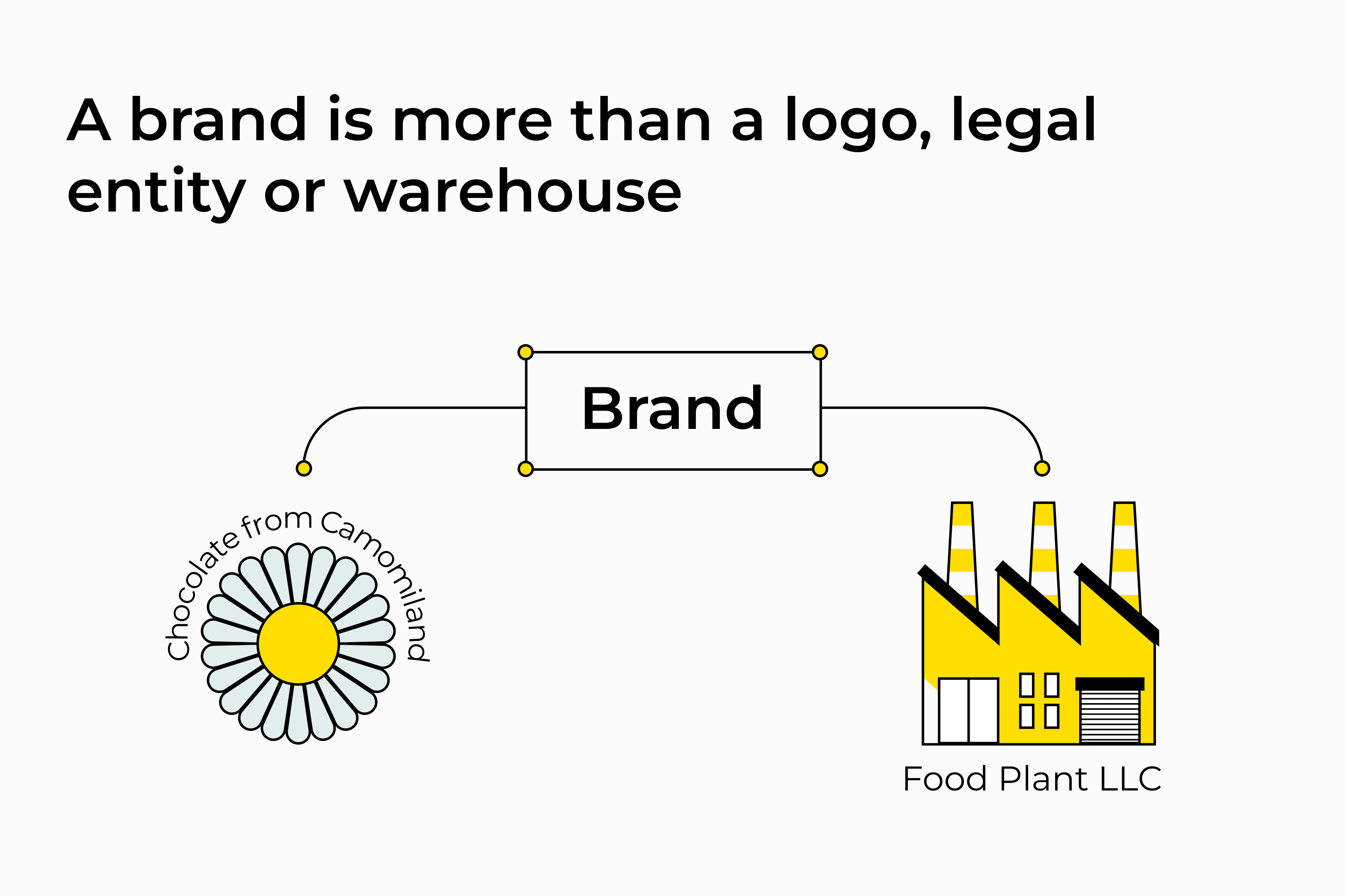
A brand is a narrative that has matured and solidified in the minds of consumers. It’s what pops into your head when you hear «Holidays are coming» (although, is this another company with a billion-dollar advertising budget? 🙄), or when you see the color of the packaging and instantly know who it belongs to, or catch a whiff of a scent and recall the bakery near your house.
The pinnacle is reached when the brand name transforms into a common noun: ’google,’ ’shazam’ . However, when someone refers to your bakery as their own, saying, ’I’m waiting for you in our bakery,’ that’s also an indication of a well-established brand. Please note, there’s nothing about the logo in any of these examples.
The primary objective in branding isn’t just crafting a logo but constructing a comprehensive image that consistently manifests itself across various communication channels.
To establish a systematic and enduring brand, at Right Studio, we employ the Identity 360 framework, encompassing four communication mediums: visual, verbal, sensory, and interactive. It’s akin to the human sensory system.
Use this framework as a cheat sheet: explore what you can generate to position your brand at every touchpoint with customers, engage with them, and convey impactful messages.
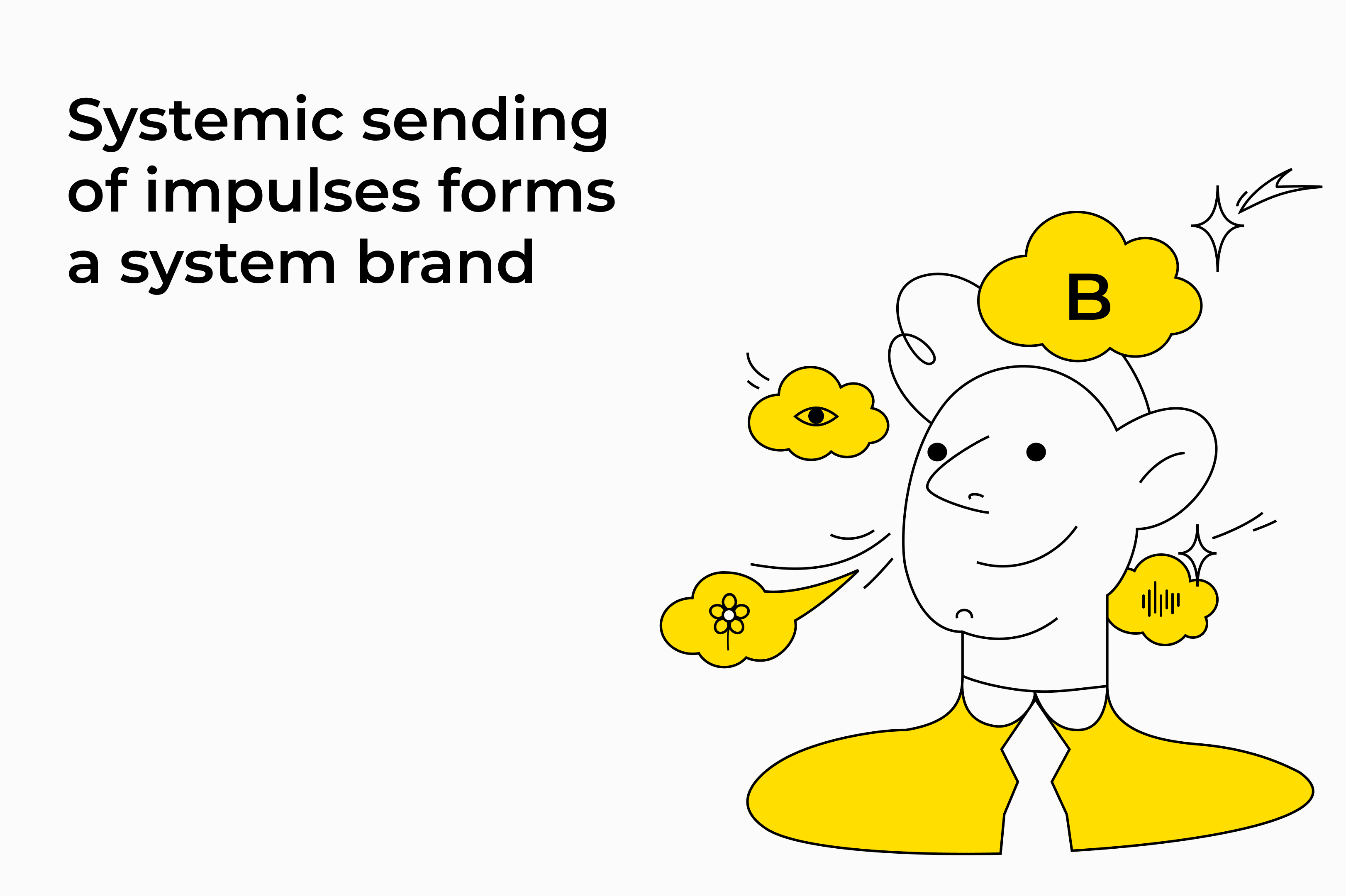
At this juncture, a business with a discerning mindset might question, “Why bother with things like verbal identity and jingles if I’m selling through an online store? The customer visits the site, adds items to the cart, and receives them from the courier. What’s the need for all that?”.
Regardless, your company will communicate something, but whether it’s done systematically or haphazardly is up to you. Users don’t merely visit the site and add products to the cart; during this process, they engage with your business. This interaction can be pleasant or indifferent, clear or confusing, respectful or casual. For instance, if a customer schedules a call to clarify product size or delivery details, and they receive a callback, the voice contact also comes into play — whether it’s cheerful, tired, friendly, or impatient. As a final touch, picture a courier arriving at the customer’s doorstep, potentially exuding exhaustion and bringing along the sensory identity of your brand.
These represent all the touchpoints with your brand that users inevitably encounter, and in some instances, they might not be functioning optimally.
‘You don’t need a brand unless you plan to conquer the world’
Establishing a brand is crucial, even if you’re just starting out and don’t harbor ambitions of making it to the Fortune Global 500 list.
A brand possesses a significant cumulative impact. Hence, if you nurture and invest in it from the initial stages, it will yield results as a long-term investment over time.
As time progresses, the brand gains strength. Unlike equipment or technology that can become obsolete, a brand appreciates in value. Therefore, view it as a long-term investment rather than a mere expense.
The strategy of ’getting a logo once and sticking with it for life’ unfortunately won’t yield results. To ensure a brand bears fruit in the future, it requires systematic and constant attention. That’s when it becomes truly beneficial. According to research by Kantar, people are willing to pay twice as much for an established brand. The buyers behave differently when interacting with a brand, as opposed to interacting with a no-name company. They trust and are willing to pay for a predictable outcome, status, and the emotions derived from using a product or service.
There might also be a desire to sell the business in the future. How can you assess its value? Besides the worth of tangible assets (enterprises, workshops, technologies), there’s a significant value in the brand, creating a value separate from material assets. You could potentially sell the brand independently from the plant, conveyor, and equipment — if you’ve built its value beforehand. Here are two recommendations:
- build and accumulate your brand from the very beginning,
- treat your brand as an investment, not an expense.
‘It’s premature to establish a brand right from the start’
When launching a company, it may appear that there’s no room for a brand at this early stage, let alone time for its registration. It might seem that a product can’t be sold without packaging, a well-established infrastructure, contracts with retail chains, hiring employees, and a host of other more immediate and pressing concerns. But creating a brand doesn’t have an appetite, so we tend to postpone it for calmer times.
However, the truth is that building a brand is a long-term, systematic endeavor. Therefore, it’s crucial to address it from the very beginning. Otherwise, you might overlook two critical elements.
Risks
If you get confused in the operational tasks, you can miss the moment of registration and lose your brand. Having created a successful product, you risk facing problems of legalizing it and protecting your property from patent trolls and other dishonest guys. This will create a huge number of problems in the future.
Prospects
Conducting brand research proves invaluable for a business in its early stages. It aids in self-understanding, differentiation from competitors, establishment of a business model, comprehension of values, and determination of what to convey to the audience and how.
All of these aspects contribute to a deeper understanding of your business and, consequently, provide your project with a more robust foundation, significantly enhancing its likelihood of success.
It’s a misconception to view creating a brand in the early stages as a frivolous distraction from business processes. On the contrary, establishing a brand aids in their construction.
This doesn’t imply rushing to create a brand fit for a Fortune 500 business right after launch — that would be futile. The key is to proceed gradually and work with the resources at hand, avoiding fanciful endeavors. However, laying the groundwork for your brand is crucial at this stage. We’ll delve into how to accomplish this in the upcoming articles.





